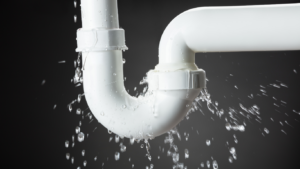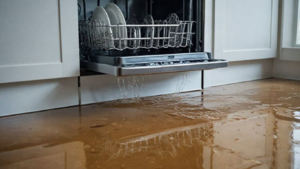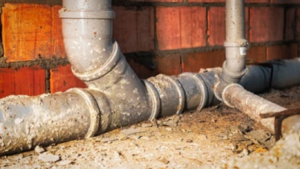Water damage is one of the most common and stressful challenges homeowners face. Whether it’s caused by a burst pipe, a leaking roof, or a natural disaster, water damage can lead to significant issues, including mold growth and structural damage. At TRIFORCE Build, we know how overwhelming water damage can be, but we also know how to restore homes safely, efficiently, and with care. This guide will walk you through handling water damage step by step so you can restore your home and your peace of mind.
Understanding Water Damage
Before diving into restoration, it’s important to understand the types of water damage:
- Clean Water Damage: Caused by broken pipes or overflowing sinks, this type of water is not contaminated but still requires prompt action.

- Gray Water Damage: This comes from appliances like dishwashers or washing machines. It contains some contaminants and can pose health risks if not addressed quickly.

- Black Water Damage: The most dangerous type, often resulting from flooding or sewage backups, black water is highly contaminated and requires professional cleanup.

No matter the type, water damage demands swift action to minimize harm and avoid long-term problems like mold growth or compromised structural integrity.
Step 1: Ensure Safety First
Before addressing the damage, prioritize safety:
- Turn Off Electricity: Water and electricity are a dangerous combination. Shut off power to the affected areas.
- Assess Structural Stability: If the damage is severe, check for sagging ceilings or weakened floors. If anything looks unsafe, evacuate and call a professional immediately.
- Wear Protective Gear: Gloves, boots, and masks can protect you from contaminants.
Step 2: Stop the Source of Water
Identify the source of the water and stop it immediately to prevent further damage:
- For Leaks: Turn off the main water supply.
- For Roof Damage: Use a tarp or other temporary covering to seal the leak until repairs can be made.
- For Flooding: If possible, create barriers to redirect water away from your home.
If the source of water damage isn’t immediately clear, a professional inspection may be necessary.
Step 3: Remove Standing Water
Standing water can lead to serious issues like mold growth within 24 to 48 hours, so prompt removal is critical.
- Use mops, buckets, or a wet/dry vacuum to clear water from hard surfaces.
- For severe flooding, contact water damage restoration professionals, like TRIFORCE Build, who have industrial-grade equipment to handle large volumes of water efficiently.
Step 4: Dry and Dehumidify
Even after removing visible water, moisture can linger in walls, floors, and furniture. This step is essential to prevent mold and mildew:
- Open windows and doors to increase airflow.
- Use fans and dehumidifiers to dry the area thoroughly.
- Remove water-damaged materials like carpeting or drywall if they cannot be fully dried.
Step 5: Inspect for Mold Damage
Mold thrives in damp environments, so inspecting for mold after water damage is critical. Look for:
- Discoloration on walls or ceilings.
- A musty odor in affected areas.
- Visible growth on surfaces.
If mold is present, do not attempt DIY removal. Mold damage restoration requires specialized tools and safety measures, which TRIFORCE Build is well-equipped to handle.
Step 6: Repair and Restore
Once the water is gone and the area is dry, it’s time to restore your home:
- Replace damaged materials like drywall, flooring, or insulation.
- Clean and sanitize all surfaces to ensure no contaminants remain.
- Repaint and refinish areas to restore them to their original condition—or better.
At TRIFORCE Build, we pride ourselves on our results-driven approach to water damage restoration. We’ll handle the repairs with precision and care, ensuring your home looks and feels like new again.
Preventing Future Water Damage
Once your home is restored, prevention becomes the focus. Here are some tips to protect your home:
- Regular Inspections: Check your roof, plumbing, and appliances for signs of wear or leaks.
- Maintain Gutters: Clean gutters and downspouts to ensure proper drainage.
- Install Water Detectors: Early detection systems can alert you to leaks before they become major problems.
- Seal Vulnerable Areas: Ensure windows, doors, and basements are properly sealed to keep water out.
Why Choose TRIFORCE Build for Water Damage Restoration?
Water damage is a serious issue, but with the right team, recovery is possible. At TRIFORCE Build, we approach every project with a family-first mindset, ensuring you feel supported and informed throughout the restoration process.
Contact us today to learn more about our water damage restoration services. Together, we’ll turn a stressful situation into a story of resilience and recovery.
